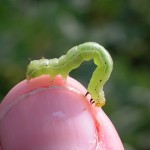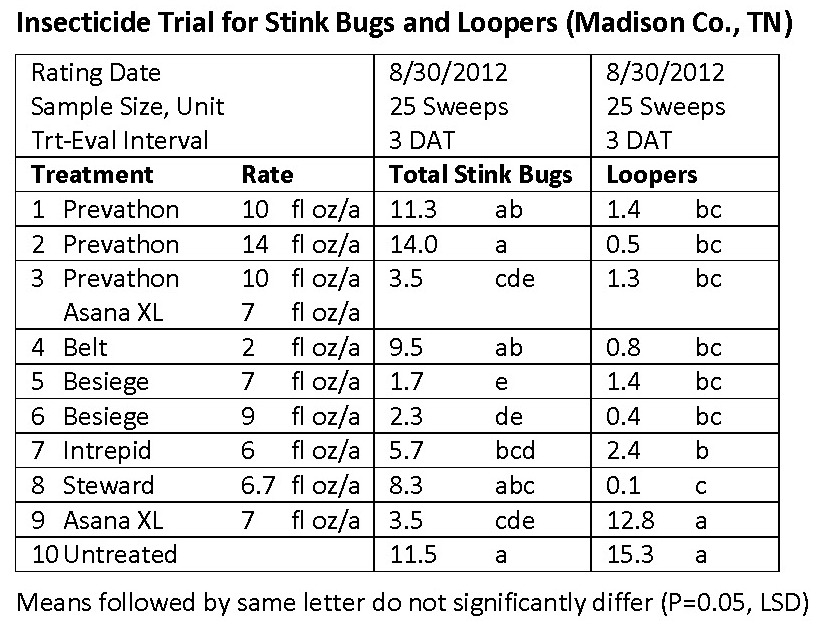
I can’t say the phone is ringing off the hook. Farmers are busy and I sense grumpiness in some corners, but let’s not cut off our nose to spite our face. Stink bugs are becoming very common in fields in many parts of the state. Loopers are more sporadic but also present in some areas. I’ve previously mentioned that the pyrethroid insecticides DO NOT provide adequate control of soybean loopers. Unfortunately, the best treatments for loopers DO NOT provide adequate control of stink bugs. I’ve included a table below that illustrates this point. Please note that neither Prevathon or Besiege are currently labeled for use in soybean.
These data were collected only three days after treatment, so the full effects of treatment have not yet been realized. Belt, Steward and Intrepid were all working well on loopers (even though Intrepid is known for its slow action). None of these product will adequately control stink bugs. Don’t be fooled by these data … Intrepid provides no control of stink bugs … you sometimes get weird results if you do enough of these tests.
We only saw a meaningful reduction in stink bug populations when a pyrethroid insecticide was included… either Asana XL or Karate (Karate is a component of Besiege). The best approach is to tank mix if you are battling both stink bugs and loopers. Common mixes would be either Intrepid, Belt or Steward with a pyrethroid insecticide. Tracer or Radiant are also good options for looper control. I have data to suggest you can often get by with a reduced rate of Belt or Intrepid if you are tank mixing, but you do so at your own risk, and you are likely giving up some residual control. I personally would not go below 4 oz of Intrepid, 1.5 oz of Belt or 5-6 oz of Steward if tank mixing with a pyrethroid insecticide.
- The threshold for stink bugs is an average 9 per 25 sweeps. A common rule of thumb is to double this threshold once a field hits R7.
- Treat for soybean loopers when population exceed 19 larvae per 25 sweeps or defoliation exceeds 20-25%.
One final thought. One excuse for not treating is the mechanical damage caused by driving a sprayer through the field. Dr. Angela McClure shared some data from Virginia Tech where they documented anywhere from 0.5 – 3.5 bushel/acre yield losses from driving though fields with a sprayer. The amount depended upon row spacing, the length of the boom and the maturity of the field. So this is a legitimate concern and a good reason to consider hiring an aerial applicator, especially given the current commodity prices. I know this may not be an option for everyone.



One thought on “Loopers and Stink Bugs Still a Concern”
Comments are closed.